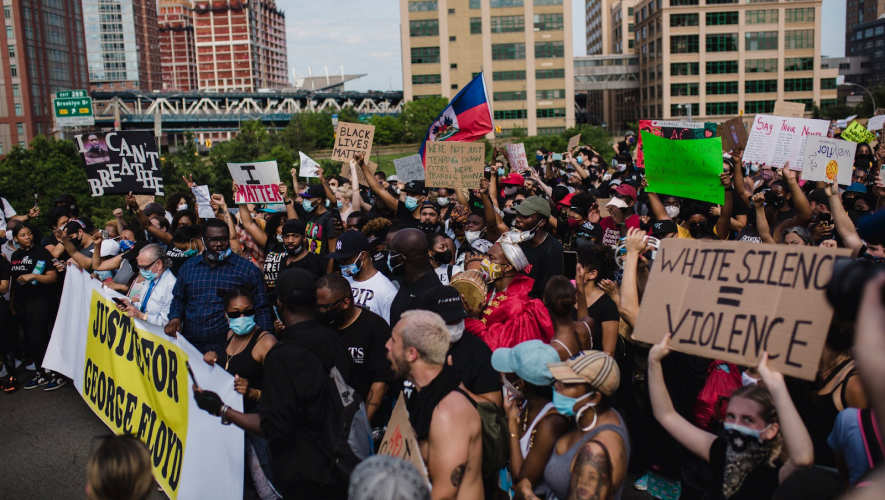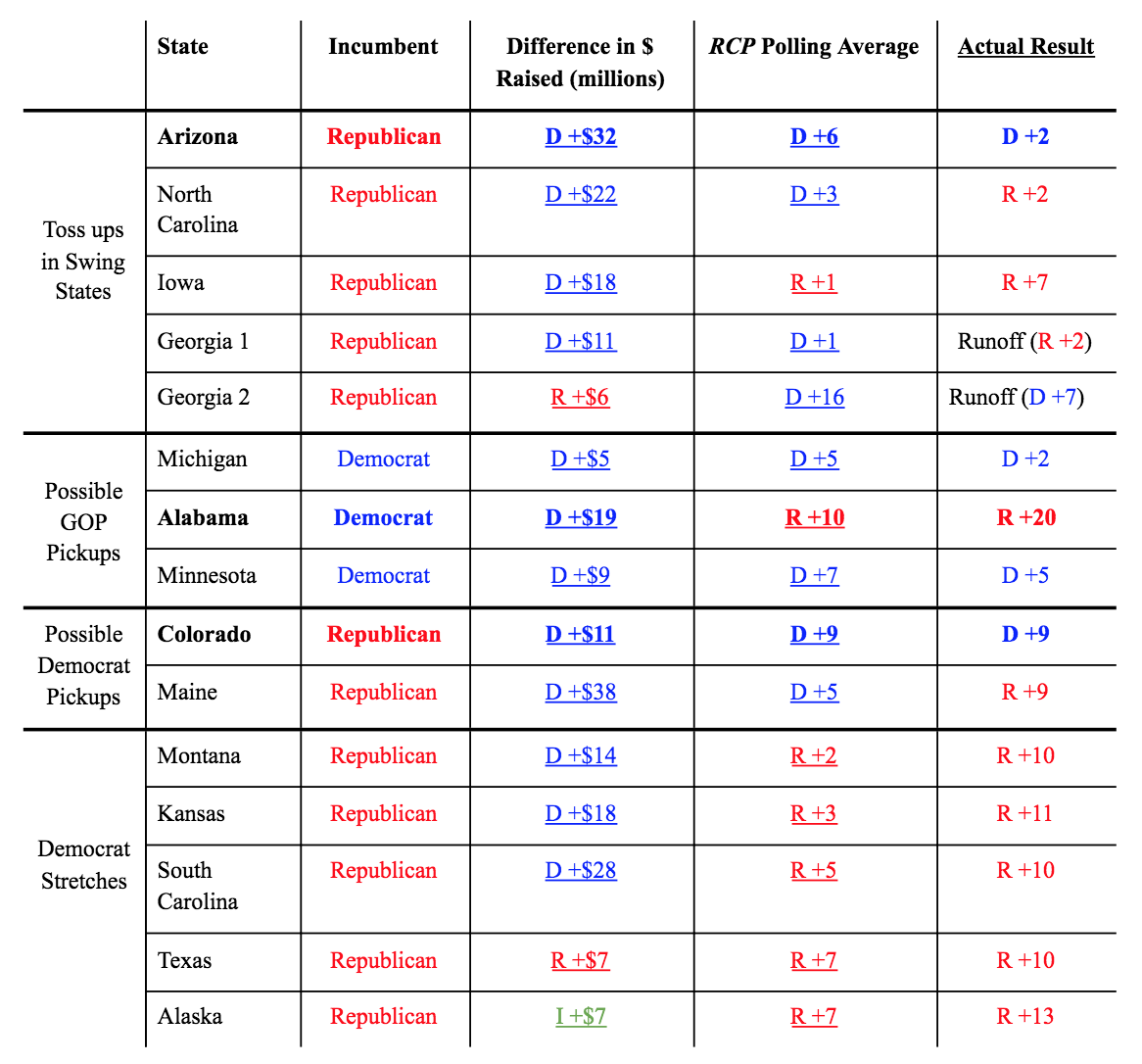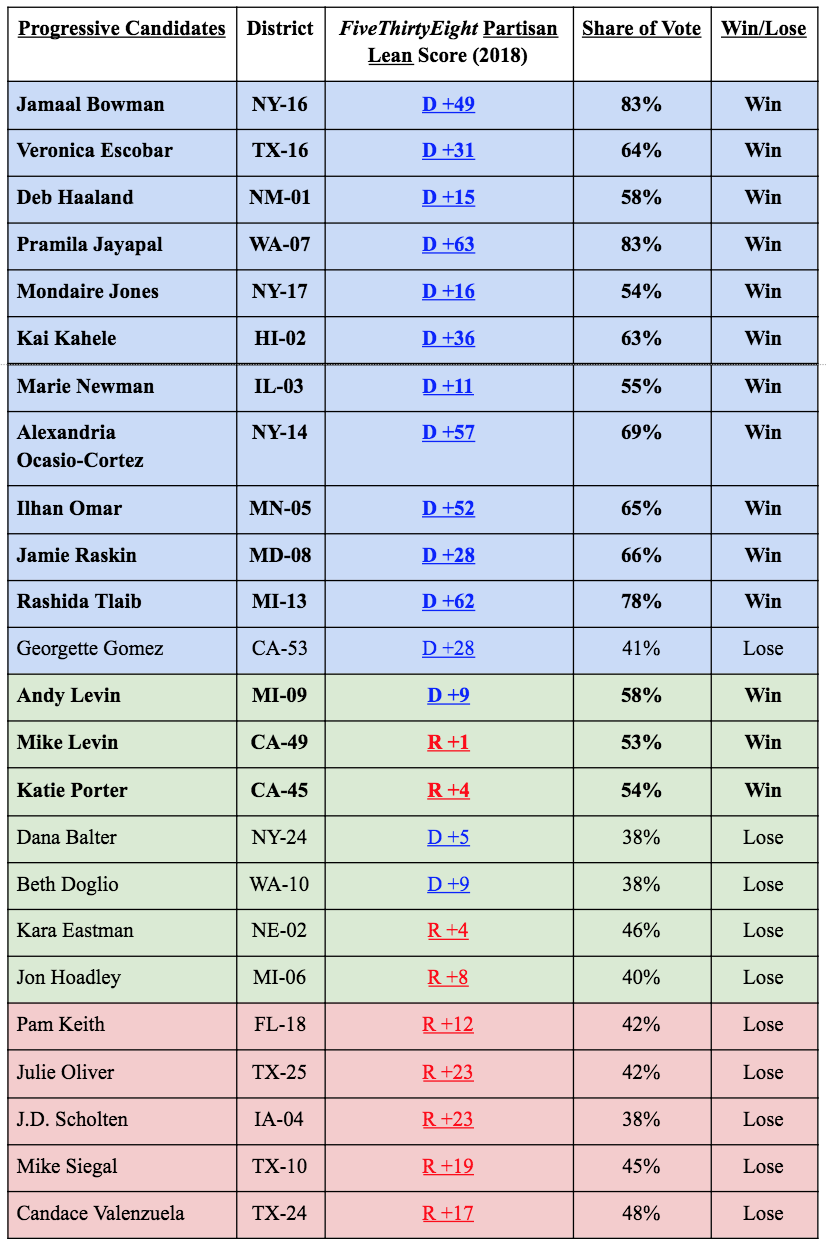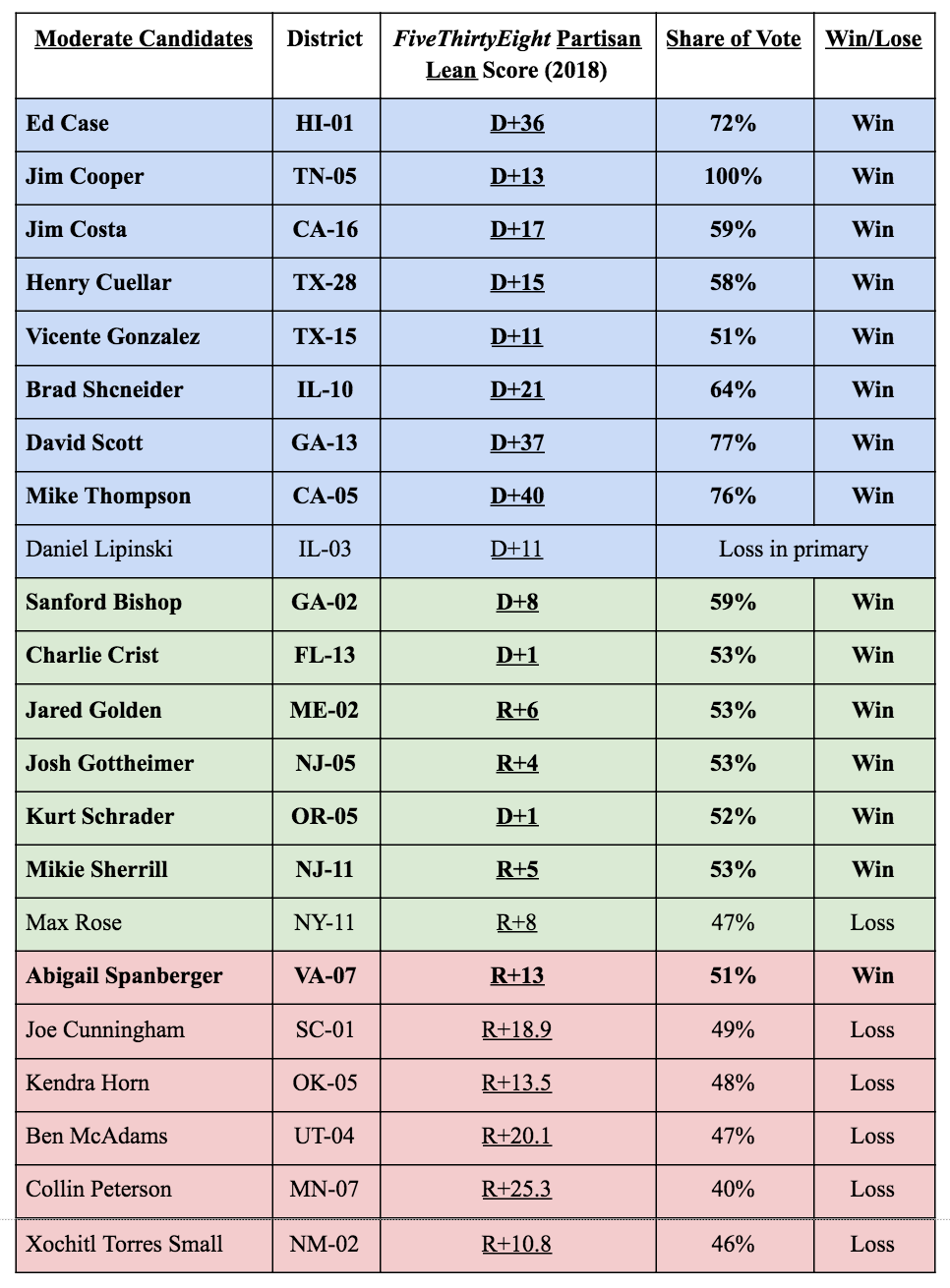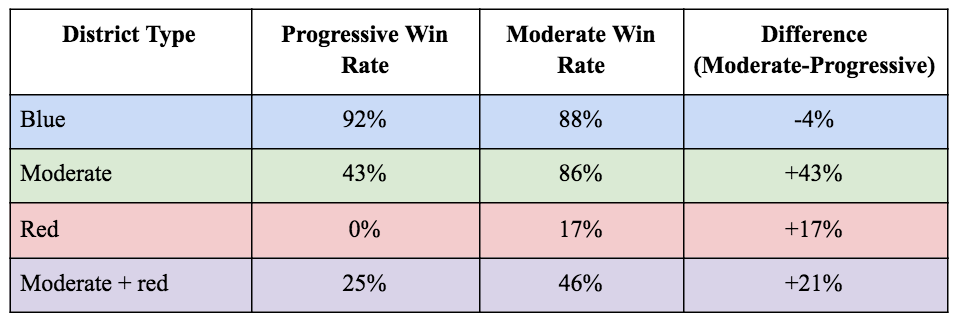November 3 was an embarrassment for Democrats. While they did secure the presidency from one of the most unpopular executives in recent history, they severely underperformed in state and congressional elections. In many ways, election night left Republicans better off. This shocking turn of events represents a popular shift away from the increasingly leftist Democratic Party.
State Legislatures and The House
Despite massive fundraising efforts, Democrats failed to flip a single state house, even losing New Hampshire’s House and Senate. Further, the GOP is set to control 70 percent of the congressional districts that are likely to be redrawn. Based on FiveThirtyEight projections, Republicans missed their best-case scenario by only four percent. Now the GOP can gerrymander—pack Democrats into single districts or spread them thin over many—to inflate their chances of winning seats in Congress.
In the House, Democrats expected to increase their majority by carving out Republican suburbs in a manner analogous to the 2018 midterm election. Hopes ran high, their eyes set on incumbents in Ohio, Illinois, and Texas and their candidates flush with cash. But Republicans “defied the odds” on election night, winning nearly every toss-up race and netting at least thirteen seats.
The Senate
Democrats needed to pick up at least three seats to secure a majority, assuming they won the presidency. There were fifteen races to watch, per election analyst Sarah Isgur. Some—like those in Arizona, North Carolina, Iowa, and Georgia—were toss-ups. Others—like Colorado and Maine—were possible Democratic pickups. There were also some unexpectedly competitive races for Democrats in Montana, Kansas, South Carolina, Texas, and Alaska.
These races, their pre-election RealClearPolitics polling averages, differences in fundraising by party, and actual results are listed below. Bolded rows indicate a flipped seat.
Polling suggested that Democrats would win the Senate with room to spare. Without considering unexpectedly competitive races, Democrats were on track to flip seats in Arizona, North Carolina, Georgia, Colorado, and Maine, outnumbering Republicans’ expected gains and exceeding the threshold needed to take the Senate. Unexpectedly competitive races only boosted Democrats’ odds—all such races threatened Republican incumbents. One GOP strategist working on Senate races told The Dispatch that Republicans had just a 15 percent chance of maintaining Senate control. “The question isn’t whether the tide is going to move against us,” he remarked. “The question is simply: how high is the water?”
Fundraising data further hinted at a blue wave. In South Carolina, Republican incumbent Lindsey Graham took to television to beg for donations when faced with Democrat Jaime Harrison’s $28 million lead. In Maine, Democrat Sarah Gideon raked in more than twice as much money as Republican incumbent Susan Collins through mid-October. In the third quarter of 2020, Democratic candidate Theresa Greenfield quadrupled Republican Joni Ernst’s fundraising numbers in Iowa. Democrats went into election night optimistic.
But the night did not sway in their favor. As of December 24, Democrats only picked up seats in Arizona and Colorado. Since Republicans flipped a seat in Alabama, Democrats ended election night with only one more seat than they had beforehand.
Georgia’s two races advanced to a runoff, but the likelihood that Democrats win both—which they need to take the Senate—is low. The Republican incumbents had their votes drawn away by right-leaning candidates whose voters are unlikely to support Democrats in the run-offs. And Republican David Perdue was only 13,000 votes away from winning the majority needed for victory.
Maddened Moderates in the House
There is one common thread running throughout losing candidates’ races: Democrats’ association with progressivism.
In 2018, Democrats won the House with a centrist message tailored for suburban voters. They took aim at fighting corruption in Washington and President Trump’s efforts to repeal the Affordable Care Act. In 2020, they moved left and paid the price.
During a leaked Democrat caucus conference call, centrists blasted progressive members of the House for fueling Republicans’ crusade against the “radical left.” Progressive rhetoric, they said, enabled Republicans to paint even moderate Democrats as socialists.
Representative Abigail Spanberger exclaimed “we need not ever use the word ‘socialist’ or ‘socialism’ ever again . . . We lost good members because of that . . . If we are classifying Tuesday as a success . . . we will get fucking torn apart in 2022.” Representatives Marc Veasey, Debbie Mucarsel-Powell, and Conor Lamb made similar points, with House Majority Whip James Clyburn concurring that Democrats will lose if they endorse progressivism. Rep. Kurt Schrader noted that voters get scared by the far left.
Many other Democrats have voiced the same sentiment in private, forcing some progressives to acknowledge the divisive nature of their bold proposals. Rep. Jared Huffman, who sits on the Progressive Caucus, affirmed that progressive Democrats should stop using the word “socialist.”
Pouncing on Progressivism in the Senate
Democratic Senate candidates were equally affected by Republicans’ progressive paintbrush. In nearly every “state to watch,” Republican attack ads portrayed Democrat opponents as radical progressives that support socialism, medicare for all, the Green New Deal, court packing, or defunding police.
In North Carolina, Thom Tillis defeated Democratic challenger Cal Cunningham by pinpointing his backing of “socialist Bernie Sanders” for president and alleging that Cunningham contributed to a list of “radical liberal” judges seeking to erode religious freedom. Tillis also cut ads purportedly showing Cunningham’s support for Medicare for all (he supports a public option), the Green New Deal (he supports “cutting our carbon impacts in half by 2030”), and defunding police (he believes police reform involves more funding).
In Iowa, Republican Joni Ernst bested Democrat Theresa Greenfield by promising to “keep the Left’s radical agenda out of Hawkeye state” and to “protect our Iowa values” from socialism. The Iowa Starting Line noted that fear of the “radical left” was a “central theme of her 2020 campaign kick-off.”
In Georgia, Republican incumbent David Perdue cast Democrat opponent Jon Ossoff as a socialist “promising free stuff” at the cost of individual freedom. Campaign ads accused Ossoff of aiming to kill the American dream with government-run health care (he supports a public option), open borders (he supports strengthening border security and creating a path to citizenship for current undocumented immigrants), and higher taxes (his plans do not directly involve any broad tax hikes). Republican incumbent Kelly Loeffler also centered her campaign around the rise of left-wing socialism.
In Montana, Republican Steve Daines warned of Democratic challenger Steve Bullock’s “radical far-left agenda” threatening Montanans’ way of life. In one ad, Daines said Bullock would “attack our Second Amendment, kill our Montana jobs, raise your taxes, and pack the Supreme Court with liberal judges.” In another, Republicans accused Bullock of supporting the replacement of Medicare by a more intrusive government-run program (he supports a public option).
In Kansas, when Republican Roger Marshall championed over Democrat Barbara Boiler, he announced that Kansans had “chosen freedom over socialism.” Unsurprisingly, his attack ads painted Boiler as a socialist. Republican incumbents in South Carolina, Texas, and Alaska also accused their opponents of harboring radical left-wing agendas.
Of the twelve Senate races where Democrats seriously challenged a Republican incumbent, Republicans attacked them as radical progressives in eleven. Only Susan Collins of Maine opted not to attack her opponent as a radical, instead depicting herself as a moderate. Either way, by claiming moderation, Republicans successfully warded off ten of their twelve challengers (receiving more votes than their opponents in Georgia).
Anti-progressive stances only failed in Arizona and Colorado, where Republicans never expected to win. In Arizona, Governor Doug Ducey appointed Republican Martha McSally to replace John McCain, even though she failed to win the 2019 Senate race against Democrat Kyrsten Sinema; McSally was a tried-and-failed candidate. In Colorado, a moderately left-leaning electorate combined with Republican Cory Gardner’s ties to Trump guaranteed his loss before the race ever began. Not to mention that Democrat John Hickenlooper is an undeniable moderate; he has directly condemned democratic socialism as a “disastrous governing model” and urged other Democrats to do the same, calling socialism “the most efficient attack line Republicans can use.”
Absent the challenge of an already-failed candidate or a pro-Trump candidate in a heavily anti-Trump state, Republicans’ pouncing on progressivism proved a near-flawless strategy.
Public Perception and Progressive Policy
The effectiveness of Republican ad campaigns targeting Democrats’ leftward shift isn’t surprising when considering public opinion. According to Gallup’s 2018 nationally representative poll of more than seventy-five thousand adults, moderates or conservatives dominated every state where Democrats challenged a Republican incumbent. These voters won’t support socialist candidates and Democratic Congressional Campaign Committee polling found that Republican campaigns focused on attacking progressive policy—like defunding or reimagining police—would prove “incredibly damaging” to moderate Democrats.
The GOP Congressional Leadership Fund determined the same by analyzing Democratic Representative Max Rose’s race in Staten Island. One month after “Democrats want to defund the police” ads started airing, Rose’s image rating dropped twenty-four points, tanking his bid for reelection. Unsurprisingly, Republicans aired roughly seventy different ads excoriating progressive calls to “defund the police” over the course of the campaign.
A host of top Democratic strategists agree that the party’s leftward shift is jeopardizing candidates in suburban districts. This is probably why former President Barack Obama and President-elect Joe Biden have recently chastised progressive activists for touting “defund the police.”
Evidence from the 2020 Democratic primaries also suggested that targeting progressivism would prove worthwhile. Bernie Sanders underperformed his 2016 vote totals by an average of nineteen points, losing three states he had previously won (Idaho, Michigan, Wisconsin). And this isn’t because more progressive candidates ran in 2020; Sanders participated in nine primaries after Elizabeth Warren dropped out—leaving them two-person races—and still underperformed his 2016 results by an average of 16 points.
Data from More in Common—an initiative to counter political polarization—affirms that progressives are actually a minority in America. In their 2018 study “Hidden Tribes: A Study of America’s Polarized Landscape,” More in Common combined large-scale polling with insights from social science to quantify the political leanings of the American electorate. Rather than asking people to self-identify their ideologies, More in Common polled them on policy issues and constructed the political spectrum from scratch according to their responses.
They found that only eight percent of respondents were progressive activists. The vast majority of respondents (67 percent)—termed the “Exhausted Majority”—shared “a sense of fatigue with our polarized national conversation,” and “a willingness to be flexible in their political viewpoints.”
Views of the Exhausted Majority—unlike many devoted progressives—oscillate between the major parties, depending on the issue. When it comes to racial justice, members of the Exhausted Majority almost unanimously agree that White supremacy is a growing threat, diverging from devoted conservative opinion. But they also diverge from progressive opinion, as they oppose race-based affirmative action in college admissions.
Ultimately, the most nationally recognized progressive campaign failed to spark a blue wave. And self-reported political ideology by state, internal Democratic polling, internal Republican analyses, and quantitative studies on the electorate all illustrate one thing: progressivism is not popular with most Americans, and it renders moderate Democrats vulnerable to political attack.
Public Opinion in Action
Elections reflect public opinion and public opinion opposes progressive policy. While the progressive movement saw some victories on election night, almost all were in blue districts where progressives championed in low-turnout primaries. In moderate or red-leaning districts, moderate Democrats reigned supreme.
The table below lists prominent progressive candidates (those supported by the Progressive Change Campaign Committee) who ran in 2020, their district’s 2018 FiveThirtyEight partisan lean score, and the outcome of their race. Blue or red highlights indicate districts with partisan lean scores above ten. These districts were considered blue or red because such a score almost universally ensured a party win in that district in 2018. A green highlight indicates a moderate district.
In Democrat-friendly districts, eleven of twelve progressive candidates won their races. The only loss was Georgette Gomez, who fell to another Democrat running on a more moderate platform. Compare progressives’ 92 percent win rate in blue districts to their measly 43 percent win rate in moderate districts (three of seven) and their zero percent win rate in red districts (zero of five).
Moderates appealed to more voters—and won more frequently—than progressives. The table below lists prominent moderates (every Democratic representative in the Blue Dog Coalition) that ran in 2020.
Moderate Democrats were nearly as successful as progressives in blue districts but notably more successful in moderate and red districts, as shown below.
Additional evidence from the 2020 election confirms that Americans tend toward moderation. Biden outperformed prominent progressive Ilhan Omar by sixteen points in her own district. Since Republicans have criticized both Biden and Omar for their personal failings, controversy over Omar’s character is unlikely to explain this large gap in voter support.
In California—one of the most progressive states—voters rejected Propositions 13, 16, and 25, which would have raised property taxes for businesses, allowed affirmative action, and abolished cash-bail, respectively. Progressive-backed ranked-choice voting initiatives also failed in Alaska and Massachusetts. Clearly, progressives face an uphill battle convincing Americans of their proposals.
Biden Wasn’t Seen as a Bulwark Against Progressives
Some progressives blame the Democrats’ failures on losing candidates themselves, rather than progressive rhetoric. ‘The Democrats aren’t that progressive,’ they said. After all, they nominated moderate Joe Biden for the highest office in the land.
While Democrats did shun Bernie Sanders for Biden, Biden’s flirtation with progressive policy overshadowed their attempt at moderation.
Republicans and conservative pundits highlighted Biden’s self-admitted role as a “transition candidate” for more progressive Democrats and pointed to his running mate, Kamala Harris, as evidence of him caving to the far-left. GovTrack rated Harris the most politically left senator in 2019, and a majority of Americans believe Biden will not finish his first term. Conservative commentators slammed Harris for co-sponsoring the Green New Deal, supporting Medicare for All (including for undocumented immigrants), advocating a ban on importing AR-15-style assault weapons, and expressing openness to decriminalizing illegal border crossings.
Republicans played on repeat Bernie Sanders’s characterization of Biden as “the most progressive” president since Franklin D. Roosevelt, as well as Biden’s support for a ban on fracking (Biden’s written energy plan does not mention banning fracking). Conservative commentators pointed to Biden’s refusal to condemn Antifa (an umbrella term for far-left militant groups) during this summer’s riots as a paradigm of what Democratic power would bring: soft-pedaling radical and violent leftists. Pundits even raised Trump’s condemnation of White supremacy after Charlottesville as an example of what Biden should have done, decrying Biden’s silence as worse than Trump’s latency. After all, we are talking about the most expensive riots in American history, costing insurance companies $1–2 billion and as many as twelve people their lives.
Most convincingly, Republicans broadcasted that left-wing groups like Demand Progress and the Roosevelt Institute are prepared to saturate a Democratic White House with their preferred progressive administrators, effectively pushing the executive branch to the left.
Anti-Trump sentiment—and the perception that Trump is more radical than Biden—overpowered Trump’s bid for reelection. But it wasn’t enough to convince the public that a Biden administration, empowered by a Democrat-controlled House and Senate, would stay true to the political center.
The Black Lives Matter Protests Didn’t Help Biden
In the months leading up to George Floyd’s murder, Biden polled at approximately five points above Trump. Within two weeks of the killing, this lead expanded to almost eight points. By the end of the summer and America’s racial reckoning, Biden led by nine. Circumstantially, it does appear that the Black Lives Matter movement, and associated slogans like “defund the police,” helped Biden to the presidency and may have helped other Democrats along the way.
However, this analysis is overly simplistic. Concluding that Black Lives Matter Protests helped Biden ignores that the “Shy Trump Voter” theory also explains his rise in the polls.
It is well established that polls wildly underestimated national support for Trump; the final FiveThirtyEight polling put Biden ahead of Trump in the popular vote by 8.4 points, but he ended up winning by four. The “shy Trump voter” theory explains this abysmal performance. It asserts that—due to a distrust of media-associated pollsters—Trump voters declined to answer polls more frequently than Biden voters, underrepresenting Trump voters in reported data. During the Black Lives Matter protests, it’s possible that Trump supporters become more wary of admitting their views to pollsters for fear of being called racist and suffering professional blowback.
Stratifying the 2020 polling error by demographic characteristics lends credence to this explanation. Before the 2020 election, 40 percent of Republicans with college degrees worried they would suffer professional consequences if their political views became known, compared to fewer than one-third of uneducated Republicans. After the election, it turned out that polls underestimated Trump’s support among college-educated White people by 31 points, but only erred by three for uneducated White people.
Given the apparent influence of the “shy Trump voter” on polling of White, college-educated voters, it’s probable that national polling—conducted during one of the more divisive moments in recent history—was also influenced by Trump voters’ aversion to pollsters. These findings, taken in conjunction with the more direct internal Democratic Congressional Campaign Committee polling, Republican analytics, More in Common research, and election win rates by candidate ideology, firmly oppose the claim that Black Lives Matter Protests and associated slogans helped Biden’s campaign or that of most other Democrats.
Unpopular Progressive Ideas Overshadowed Popular Ones
In a piece for The Atlantic, Ibram X. Kendi tackles the influence of progressive policy on election outcomes with a mosh-posh of successful state ballot initiatives and polling data. He argues progressives couldn’t have hurt Democrats’ chances since there is widespread support for a $15 minimum wage, the legalization of marijuana, higher taxes on the wealthy, paid family leave, universal basic income, a public option, student loan forgiveness, and the Green New Deal. He also points out that many voters expressed concern about the effects of climate change and societal racism before the election.
But Kendi waves away the Democrats’ largest rhetorical misstep, adding the disclaimer that progressive policies “with the exception of defunding the police,” are fairly popular.
In fact, he doesn’t address polling for most of the left’s more radical proposals—the ones that Republican candidates and pundits leveraged in their attacks. Besides defunding police, Republicans accused Democrats of supporting socialism, Medicare for all, and court packing. These ads likely stuck because Americans refuse to support socialism at the ballot box, Medicare for all is an unpopular policy, and a plurality of Americans oppose court packing.
Kendi claims that the Green New Deal had public support, but misrepresents polling data. He writes that “59 percent of respondents [to a Climate Nexus poll] supported the Green New Deal,” but the poll he’s referring to never asked participants about it directly. On the other hand, polls that did inquire about the deal found that most Americans haven’t heard much about it; of those who had, a majority opposed it due to its predicted financial costs. This is the exact critique made by many Republican pundits.
Kendi’s attempts to cover for progressives are misleading. Of course cherry-picking polling data makes it look like progressives didn’t hurt Democrats’ chances. But reality isn’t cherry-picked, and reality suggests that many leftist ideas scared away moderate voters.
The Takeaway
Despite significant fundraising deficits, Republicans defeated their challengers in state legislatures, the House, and the Senate, all by attacking progressive policies. And while control of the Senate is still technically up for grabs, some Democrats haven’t learned much from election night. Chuck Schumer told supporters in New York, “we take Georgia, then we change America,” in a clip that has already been amplified by right-wing media and prominent politicians. Progressive representatives Alexandria Ocasio-Cortez and Rashida Tlaib aren’t backing down either, blaming an underinvestment in digital marketing for moderate campaigns’ losses, although, neither have named specific campaigns tanked by unwise spending.
Progressive politics are sabotaging the Democratic Party. To form a viable political coalition, Democrats must take clear action to separate themselves from radicalism.

